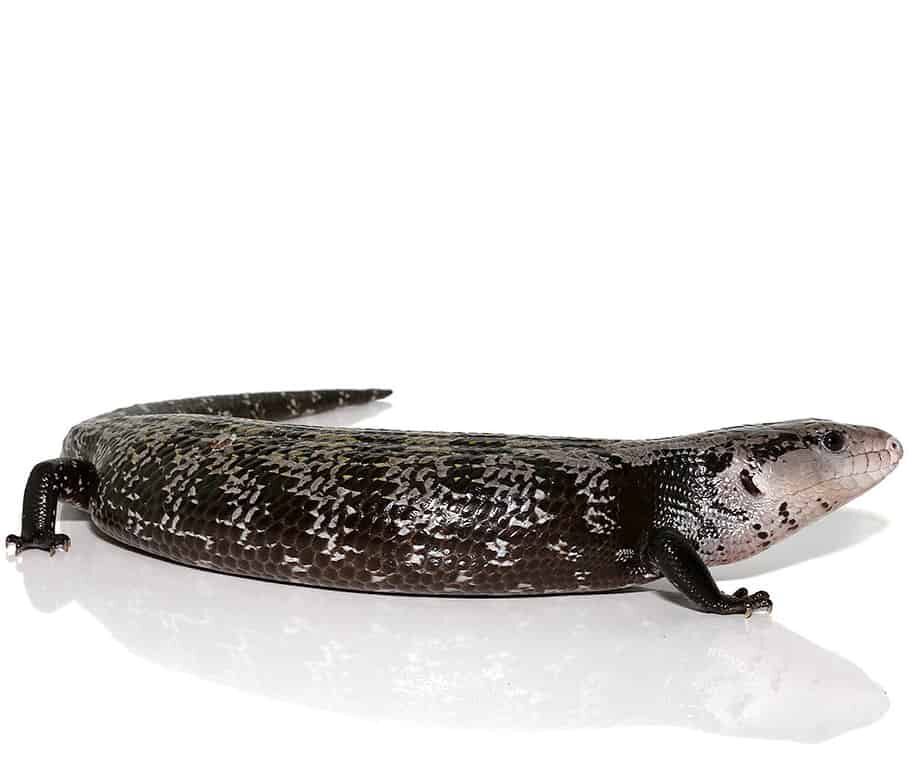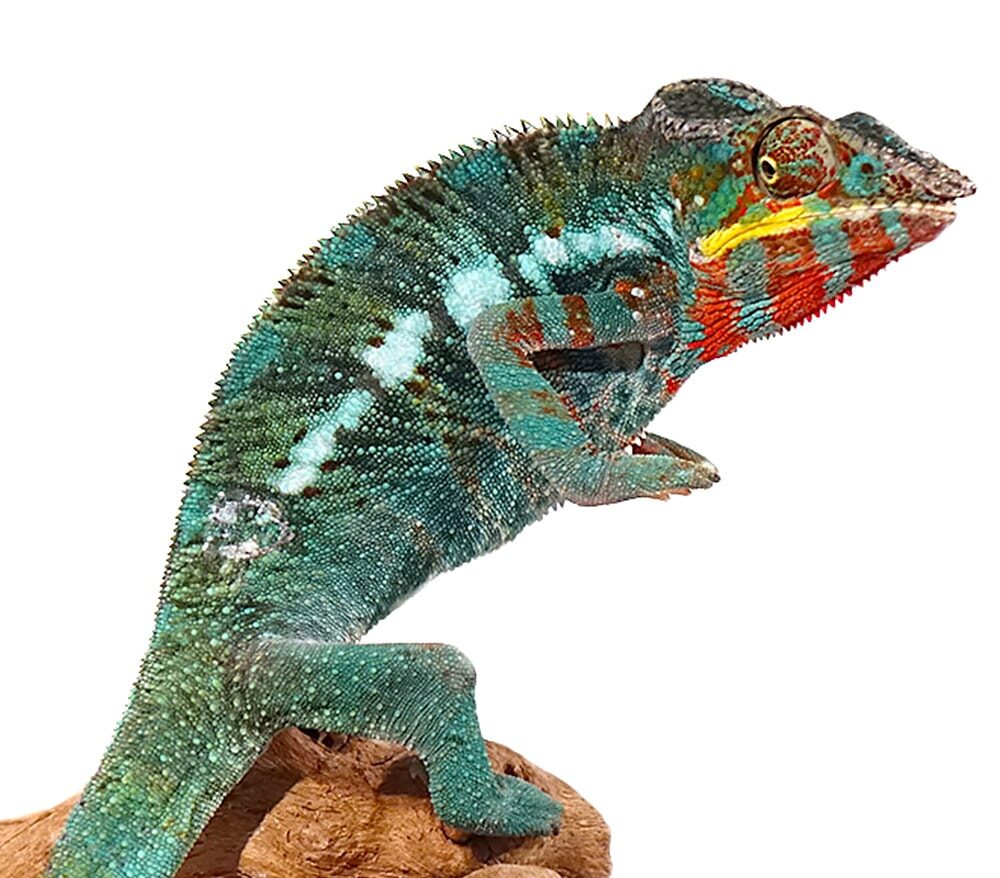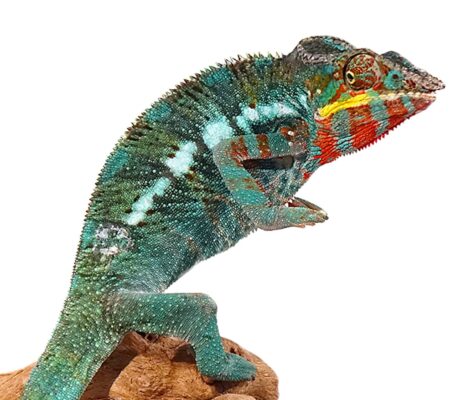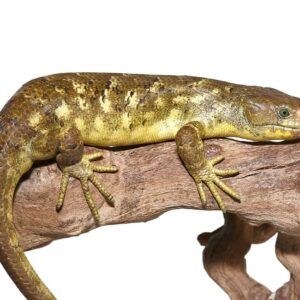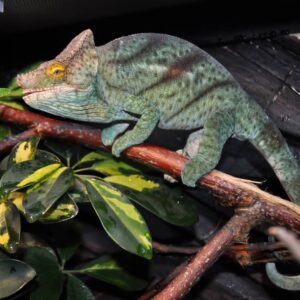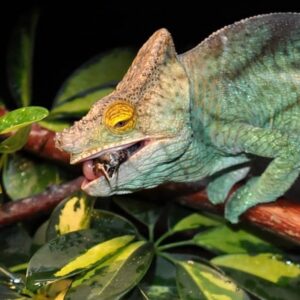Bermanja Panther Chameleon For Sale
$349.99
WE HAVE BERMANJA PANTHER CHAMELEON FOR SALE. HERE ARE SOME HIGHLIGHTS:
- Furcifer pardalis
- Captive Bred
- Approximate Sizes Ranging From 10 – 18 In Length
- Adults Are Averaging Around 14 – 18 Inches In Total Length
- Feeding On Vitamin Dusted Crickets, Worms And Roaches
FUN FACTS!
- Originating From Madagascar These Range From The Coastal Central To Northeastern Madagascar
- With Proper Care They Can Live Up To 3 – 5 Years
- Arboreal Species, Provide Plenty Of Fake Plants And Branches
- A Misting Or Dripping System For Water Is Best, Manual Misting Also Works
- These Are Precision Hunters, Shooting Out Their Tongue At Lightning Speeds To Catch Prey
Description
The Bermanja Panther Chameleon, scientifically known as Furcifer pardalis bermanjaensis, is a remarkable reptile renowned for its vibrant coloration and unique adaptive abilities. This chameleon species is a subspecies of the Panther Chameleon, which is native to the island of Madagascar. Known for its striking hues that range from deep blues to vivid reds and greens, the Bermanja Panther Chameleon is a marvel of natural artistry and evolutionary adaptation.
Physically, these chameleons possess a laterally compressed body, a prehensile tail, and zygodactylous feet, which are perfectly suited for an arboreal lifestyle. Their eyes, capable of moving independently, provide a 360-degree field of vision, allowing them to spot predators and prey with remarkable efficiency. One of the most distinguishing features of the Bermanja Panther Chameleon is its ability to change colors, a trait used not only for camouflage but also for communication and temperature regulation.
Native to the tropical forests of Madagascar, the Bermanja Panther Chameleon inhabits regions with high humidity and dense foliage. These lush environments provide the ideal conditions for their survival, offering ample hiding spots and abundant food sources such as insects. The geographical distribution of this chameleon is primarily concentrated in the Bermanja region, from which it derives its name. This limited range makes the species particularly interesting to biologists and conservationists alike.
Understanding the habitat and physical characteristics of the Bermanja Panther Chameleon is crucial for its conservation. As deforestation and habitat loss continue to threaten Madagascar’s unique biodiversity, efforts to protect these environments are more important than ever. By studying and appreciating the Bermanja Panther Chameleon, we can gain deeper insights into the delicate balance of ecosystems and the importance of preserving them.
Physical Characteristics and Coloration
The Bermanja Panther Chameleon, a remarkable reptilian species, is renowned for its distinct physical characteristics and vibrant coloration. Adult males typically measure between 15 to 20 inches in length, including the tail, while females are slightly smaller, averaging around 10 to 14 inches. Both genders possess a prehensile tail, aiding in balance and grip as they navigate their arboreal habitats.
The coloration of the Bermanja Panther Chameleon is particularly striking. Males exhibit a fascinating array of hues, ranging from bright blues and greens to deep reds and oranges. These vivid colors are not only visually captivating but also serve as a means of communication and camouflage. Females, on the other hand, display more subdued tones, often in shades of brown, peach, or soft pink, which help them blend into their surroundings and avoid predators.
A notable feature of the Bermanja Panther Chameleon is its ability to change color. This dynamic coloration is controlled by specialized cells known as chromatophores and iridophores. Chromatophores contain different pigments, while iridophores reflect light, creating the chameleon’s vibrant display. Color changes can be triggered by various factors, including environmental conditions, social interactions, and emotional states. For instance, a male might intensify his colors to assert dominance or attract a mate, while stress or fear can prompt a rapid shift to darker hues.
In addition to their color-changing prowess, Panther Chameleons exhibit other unique physical traits. Their eyes can move independently, providing a wide field of vision, crucial for spotting prey and predators. Moreover, their zygodactylous feet, with toes arranged in opposing groups, enhance their climbing abilities, allowing them to grasp branches securely.
Overall, the Bermanja Panther Chameleon’s physical characteristics and coloration are not just for show; they play critical roles in its survival and reproductive success. Understanding these traits provides valuable insight into the adaptive strategies of this fascinating species.
Habitat and Natural Environment
The Bermanja Panther Chameleon inhabits the lush, forested regions of Madagascar, an island renowned for its rich biodiversity. These chameleons thrive in environments where dense foliage and ample vegetation provide both shelter and hunting grounds. Typically found in tropical and subtropical forests, the Bermanja Panther Chameleon prefers regions with a warm, humid climate, which supports their need for moisture and a stable temperature range.
Within these habitats, the chameleons are adept at navigating the complex three-dimensional structure of the forest. They make use of the canopy and understory layers, which offer an abundance of insects, their primary food source. The diverse plant life not only provides sustenance but also essential opportunities for camouflage, aiding in both predator avoidance and stealthy hunting.
Climatic conditions play a crucial role in the Bermanja Panther Chameleon’s survival. They flourish in areas where temperatures range between 22°C to 30°C (71°F to 86°F) and where humidity levels are consistently high. Seasonal variations, such as the wet and dry seasons typical of Madagascar, influence their behavior and reproductive cycles. During the wet season, the chameleons are more active and breeding is more frequent, whereas the dry season sees a reduction in activity levels.
However, the natural habitat of the Bermanja Panther Chameleon is under threat from environmental changes. Deforestation and habitat fragmentation, driven by agricultural expansion and logging, have led to a significant loss of suitable living spaces. Climate change further exacerbates these challenges, altering the delicate balance of temperature and humidity that these chameleons depend upon. Conservation efforts are vital to protect their remaining habitats and ensure the survival of this remarkable species.
Diet and Feeding Habits
The Bermanja Panther Chameleon is an insectivorous reptile with a diet that primarily consists of various insects. Key components of their diet include crickets, grasshoppers, locusts, and various beetles. Occasionally, they may also consume smaller vertebrates such as lizards or tiny birds, particularly if insect prey is scarce. These chameleons are adept hunters, utilizing their remarkable tongue, which can extend to lengths greater than their own body, to capture prey from a distance.
The hunting technique of the Bermanja Panther Chameleon is both fascinating and efficient. They rely heavily on their keen eyesight to locate potential prey. Their eyes can move independently, allowing them to survey their surroundings thoroughly. Upon spotting a target, they will lock both eyes onto it, ensuring precise aim. With lightning speed, the chameleon shoots out its sticky tongue to snatch the prey, retracting it back into its mouth with impressive force.
Nutritional needs for the Bermanja Panther Chameleon are diverse and must be carefully balanced to ensure optimal health. In captivity, owners often supplement their diet with additional vitamins and minerals, particularly calcium and vitamin D3, to prevent deficiencies. Feeder insects are typically gut-loaded, meaning they are fed nutrient-rich foods prior to being offered to the chameleon, thereby enhancing their nutritional value.
Unique feeding behaviors include the chameleon’s preference for live prey. They are less likely to consume dead or motionless insects, as their hunting instinct is triggered by movement. Additionally, these chameleons may exhibit selective feeding, choosing specific types of insects over others, which can vary based on individual preferences or nutritional needs.
Understanding the diet and feeding habits of the Bermanja Panther Chameleon is crucial for their care in captivity and conservation in the wild. Their specialized hunting techniques and specific nutritional requirements highlight the complexity and adaptability of these remarkable reptiles.
Reproduction and Lifespan
The reproductive cycle of the Bermanja Panther Chameleon is a captivating aspect of its life. During the mating season, typically occurring between November and February, males exhibit striking displays of vibrant colors to attract females. This period of courtship is characterized by head bobbing, body inflation, and color changes, which serve as visual signals of their fitness and readiness to mate.
Once a female accepts a male’s advances, the mating process commences. Post-mating, the female Bermanja Panther Chameleon undergoes a gestation period lasting approximately 20 to 30 days. Following this period, she seeks out a suitable site to lay her eggs. The female will dig a tunnel in the soil, where she deposits a clutch of 10 to 40 eggs. This process is critical, as the location and condition of the nest significantly influence the survival rate of the offspring.
Egg incubation is a lengthy process, taking anywhere from 6 to 12 months, depending on environmental conditions such as temperature and humidity. Once the eggs hatch, the juveniles emerge fully independent and capable of fending for themselves. Their growth rate is rapid, and young chameleons typically reach sexual maturity within 6 to 12 months.
The lifespan of the Bermanja Panther Chameleon varies notably between wild and captive environments. In the wild, these chameleons face various natural threats, including predators, diseases, and habitat loss, leading to an average lifespan of around 2 to 3 years. Conversely, when kept in captivity under optimal conditions, their lifespan can extend significantly, often reaching up to 5 to 7 years. Proper care, including a well-balanced diet, appropriate habitat, and regular health check-ups, is essential to maximize their longevity.
Understanding the reproductive behaviors and lifespan of the Bermanja Panther Chameleon provides valuable insights into their ecology and aids in their conservation, ensuring that these remarkable reptiles continue to thrive both in their natural habitats and in captivity.
Behavior and Social Structure
The Bermanja Panther Chameleon exhibits a complex array of behaviors that reflect its unique adaptation to its environment. One of the most notable behavioral traits is its territoriality. Males, in particular, are highly territorial and will engage in vivid displays of color to establish dominance and ward off potential rivals. These displays are not merely for show; they serve as a critical mechanism for maintaining spatial boundaries and reducing physical confrontations, which could be detrimental to their delicate physiology.
Interaction with other chameleons is limited and often dictated by the need to establish and maintain territory. While male Bermanja Panther Chameleons are solitary creatures, females exhibit a more flexible social structure. During the breeding season, females may tolerate the presence of males, but outside this period, they prefer to remain alone or in loose-knit groups. Social interactions are primarily driven by reproductive cycles, with males becoming more aggressive and territorial during mating periods.
Common behaviors observed in their natural habitat include a range of locomotive and hunting strategies. The Bermanja Panther Chameleon uses a combination of slow, deliberate movements and sudden bursts of speed to navigate the dense foliage of its environment. This methodical movement helps in stalking prey, which primarily consists of insects and small invertebrates. The chameleon’s unique zygodactylous feet and prehensile tail provide stability and precision, enabling it to maneuver effortlessly through the trees.
Another fascinating aspect of their behavior is their use of camouflage. The Bermanja Panther Chameleon can change its skin color to blend into its surroundings, a vital skill for avoiding predators and sneaking up on prey. This color change is facilitated by specialized cells called chromatophores, which expand or contract to alter the chameleon’s coloration. This adaptive trait not only provides a survival advantage but also plays a role in social signaling and communication among individuals.
In summary, the Bermanja Panther Chameleon’s behavior and social structure are intricately linked to its environmental needs and reproductive strategies. Understanding these patterns provides valuable insights into the ecological niche and evolutionary adaptations of this remarkable species.
Conservation Status and Threats
The Bermanja Panther Chameleon, a vibrant and unique species native to the forests of Madagascar, is currently facing significant conservation challenges. According to the International Union for Conservation of Nature (IUCN), the Panther Chameleon is classified under the “Least Concern” category. However, the specific subspecies like the Bermanja Panther Chameleon require close monitoring due to various threats impacting their survival.
One of the most pressing threats to the Bermanja Panther Chameleon is habitat destruction. Rapid deforestation driven by agricultural expansion, logging, and infrastructure development has led to substantial loss of their natural habitat. The chameleons rely on dense forest canopies for shelter, hunting, and breeding. As these forests are cleared, the chameleons are left with fragmented habitats, making it increasingly difficult for them to thrive.
Another significant threat comes from the illegal pet trade. The Bermanja Panther Chameleon, with its striking coloration and exotic appeal, is highly sought after in the international pet market. Despite regulations under the Convention on International Trade in Endangered Species of Wild Fauna and Flora (CITES), illegal capture and export continue to pose a serious threat. This not only reduces the population in the wild but also disrupts the ecological balance of their native habitats.
Conservation efforts are being undertaken to mitigate these threats. Organizations and local authorities in Madagascar are working towards habitat preservation through the establishment of protected areas and reforestation projects. These efforts aim to restore the natural habitats and provide a safe environment for the Bermanja Panther Chameleon to thrive. Additionally, there are initiatives focused on raising awareness about the negative impacts of the illegal pet trade and promoting responsible pet ownership.
In conclusion, while the Bermanja Panther Chameleon is not yet critically endangered, proactive conservation measures are essential to ensure their long-term survival. By addressing habitat loss and controlling the illegal pet trade, we can contribute to the preservation of this remarkable species and the rich biodiversity of Madagascar.
Caring for Bermanja Panther Chameleons in Captivity
Caring for a Bermanja Panther Chameleon in captivity requires a thorough understanding of its specific needs to ensure a healthy and vibrant pet. One of the key aspects of proper care is replicating their natural habitat. A well-ventilated enclosure with ample vertical space is essential, as these chameleons are arboreal creatures. Adding live plants not only aids in humidity control but also provides climbing opportunities and hiding spots, mimicking their natural environment.
Temperature regulation is crucial for the well-being of Bermanja Panther Chameleons. The enclosure should have a temperature gradient, with a basking spot reaching around 85-90°F and a cooler area maintaining 70-75°F. Nighttime temperatures can drop slightly but should not fall below 65°F. Using a combination of heat lamps and UVB lighting helps in maintaining the correct temperature and providing essential UVB rays, which are vital for calcium metabolism and overall health.
When it comes to feeding, a diverse diet is important. Bermanja Panther Chameleons primarily eat live insects such as crickets, roaches, and mealworms. Offering a variety of insects ensures balanced nutrition. Dusting the insects with calcium and vitamin supplements a few times a week is recommended to prevent deficiencies. Hydration is equally important; misting the enclosure twice daily and providing a dripper system helps in maintaining proper hydration levels, as chameleons prefer to drink water droplets from leaves.
Regular health check-ups are necessary to monitor the chameleon’s well-being. Common health issues include metabolic bone disease, respiratory infections, and parasitic infestations. Signs of illness may include lethargy, loss of appetite, or abnormal changes in coloration. Prompt veterinary care is essential if any of these symptoms are observed.
Owning a Bermanja Panther Chameleon can be a rewarding experience, but it also comes with challenges. These reptiles require diligent care and attention to detail. However, with the proper setup and knowledge, they can thrive in captivity, providing their owners with a fascinating glimpse into the world of these remarkable creatures.


